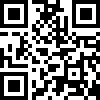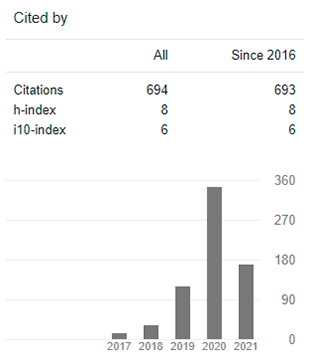Long Distance Education. Alternative for University Studies in Today's Venezuela
DOI:
https://doi.org/10.29394/scientific.issn.2542-2987.2017.2.5.19.356-376Keywords:
distance education, ict, researchAbstract
If we start from the fact that education is a human right, the State has an obligation to guarantee equitable access to the education system at all levels. In that sense, governments should offer alternatives for the population to have access to it. This alternative can be distance education (EaD), a modality mediated by ICT as a learning tool of the millennium that offers low cost, massification and democratization, with a relevant and effective education. The objective of the present essay is to show the benefits of EaD and how it has become an alternative for the training of professionals with the same quality and excellence of the graduates in the conventional systems, stating the most outstanding differences between the distance modality and The conventional, the role of counselors and students, the characteristics of counselors and students at a distance; And the scientific and humanistic contribution of the researches with remote systems, which demonstrate that the EaD meets and has the educational competence to form a cutting-edge human resource, with the demands of the millennium.
Downloads
References
Barberá, E. Romiszwski, A. Sangrá, A. y Simonson, M. (2006). Educación Abierta y a Distancia. Editorial UOC. Barcelona, España. [Documento en línea]. Recuperado de: https://books.google.co.ve/books?id=soNcDQAAQBAJ&pg=PT23&dq
Casas, M (2005). Nueva Universidad ante la Sociedad del Conocimiento. Revista de Universidad y Sociedad del Conocimiento, Vol. 2 – Nro. 2. Recuperado de: http://www.uoc.edu/rusc/2/2/dt/esp/casas.pdf
Consejo Nacional de Universidades. Proyecto Nacional de Educación Superior a Distancia. Recuperado de: http://www.vracad.usb.ve
Constitución de la República Bolivariana de Venezuela (1999). Gaceta Oficial de la República de Venezuela, N° 36.860. 30 diciembre. Recuperado de: http://pdba.georgetown.edu/Constitutions/Venezuela/ven1999.html
Cookson; P.S. (2002). Acceso y Equidad en la EaD: Investigación Desarrollo y Criterio de calidad. Revista electrónica de Investigación Educativa, Volumen 4 – Nro. 2. Recuperado de: http://redie.uabc.mx/redie/article/view/66
García, L. (2001). La Educación a Distancia: De la Teoría a la Práctica. España: Ariel Educación.
García, L. (2012). ¿Por qué va ganando la Educación a Distancia?. Universidad Nacional de Educación a Distancia. Edición digital. Madrid, España. Recuperado de: https://books.google.co.ve
García L. (2014). Bases, Mediaciones y Futuro de la Educación a Distancia en la Sociedad Digital. Madrid: Ed. Síntesis. ISBN: 978-84-995881-4-8. Recuperado de: http://aretio.hypotheses.org/1111
Leal, N. (2000). El mundo Interior del Estudiante UNA. Revista UNA documenta 14(1), 49-65. Caracas; UNA. (Compilación con fines instruccionales). Recuperado de: http://dip.una.edu.ve/mead/asesoria/paginas/lealmundo.pdf
Leal, N. (2004). La Soledad del Estudiante a Distancia de la Universidad Nacional Abierta. (Compilación con fines instruccionales). [Documento en línea]. Recuperado de: http://especializacion.una.edu.ve/fundamentos/paginas/leal2004.pdf
Ley de Universidades (1970). Gaceta Oficial N° 1.429. (Extraordinario). Septiembre 8, 1970. Venezuela.
Universidad Nacional Abierta (1996). Reglamento de la Universidad Nacional Abierta. Gaceta Oficial N° 5.098. Extraordinaria. Venezuela.
Peralta, H. (2006). Educación distancia y EIB. Plural Editores. La Paz, Bolivia. Recuperado de: https://books.google.co.ve
Peña, J. (2017). Herramientas de Comunicación Virtual para la Práctica Docente. Revista Scientific, 194-214. Recuperado de: https://doi.org/10.29394/scientific.issn.2542-2987.2017.0.0.11.194-214
Pons, J. García, M. Jiménez, J. (s/f). La Teleformación como Evolución de la Enseñanza a Distancia. Recuperado de: http://postgrado.una.edu.ve/fundamentos/paginas/pablos.pdf
Downloads
Published
How to Cite
Issue
Section
License
Copyright (c) 2017 INDTEC, C.A.

This work is licensed under a Creative Commons Attribution-NonCommercial-ShareAlike 4.0 International License.
The content of the journals of this site, are under a Creative Commons Attribution-Noncommercial-Share Alike 4.0 International License.













